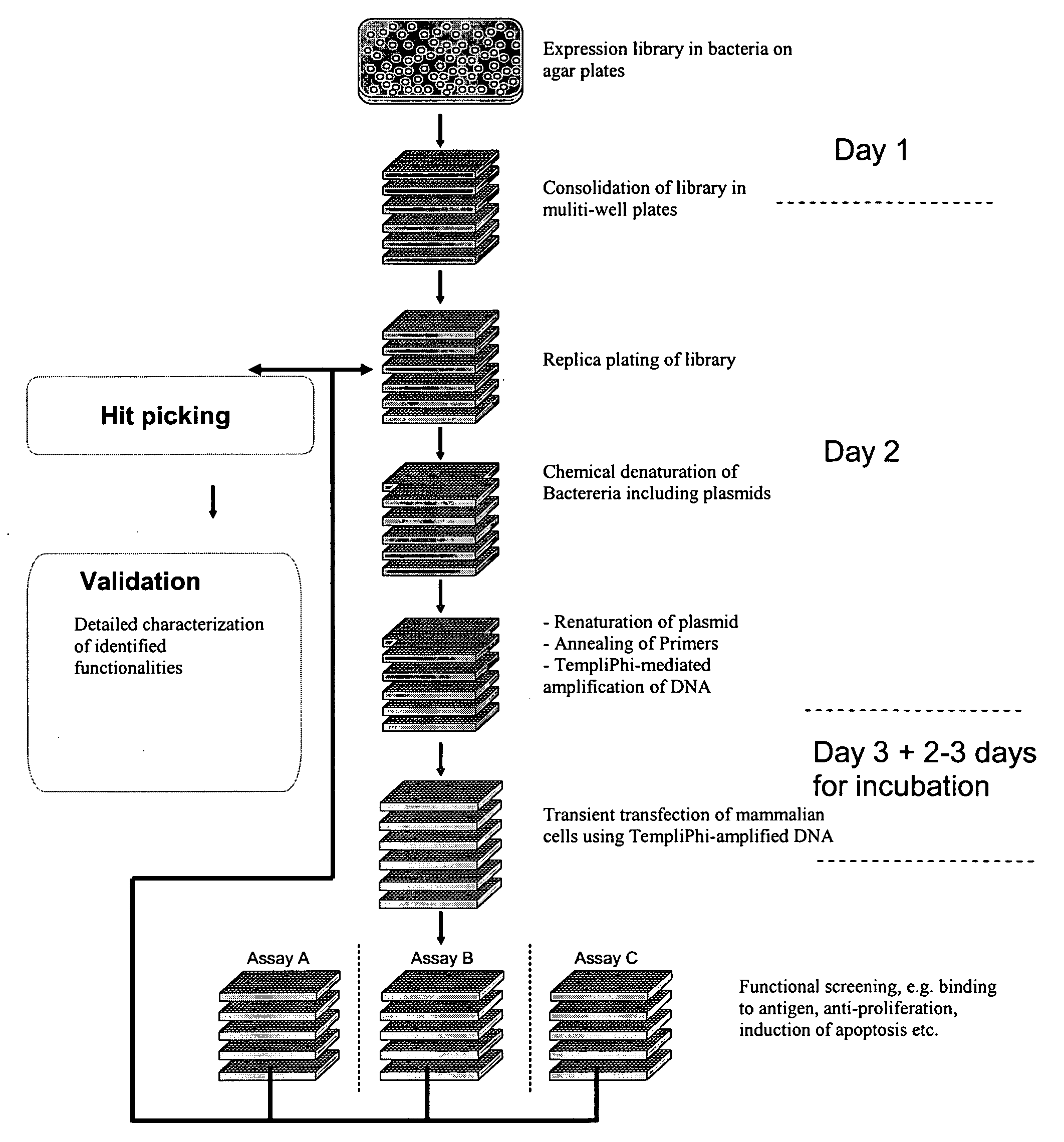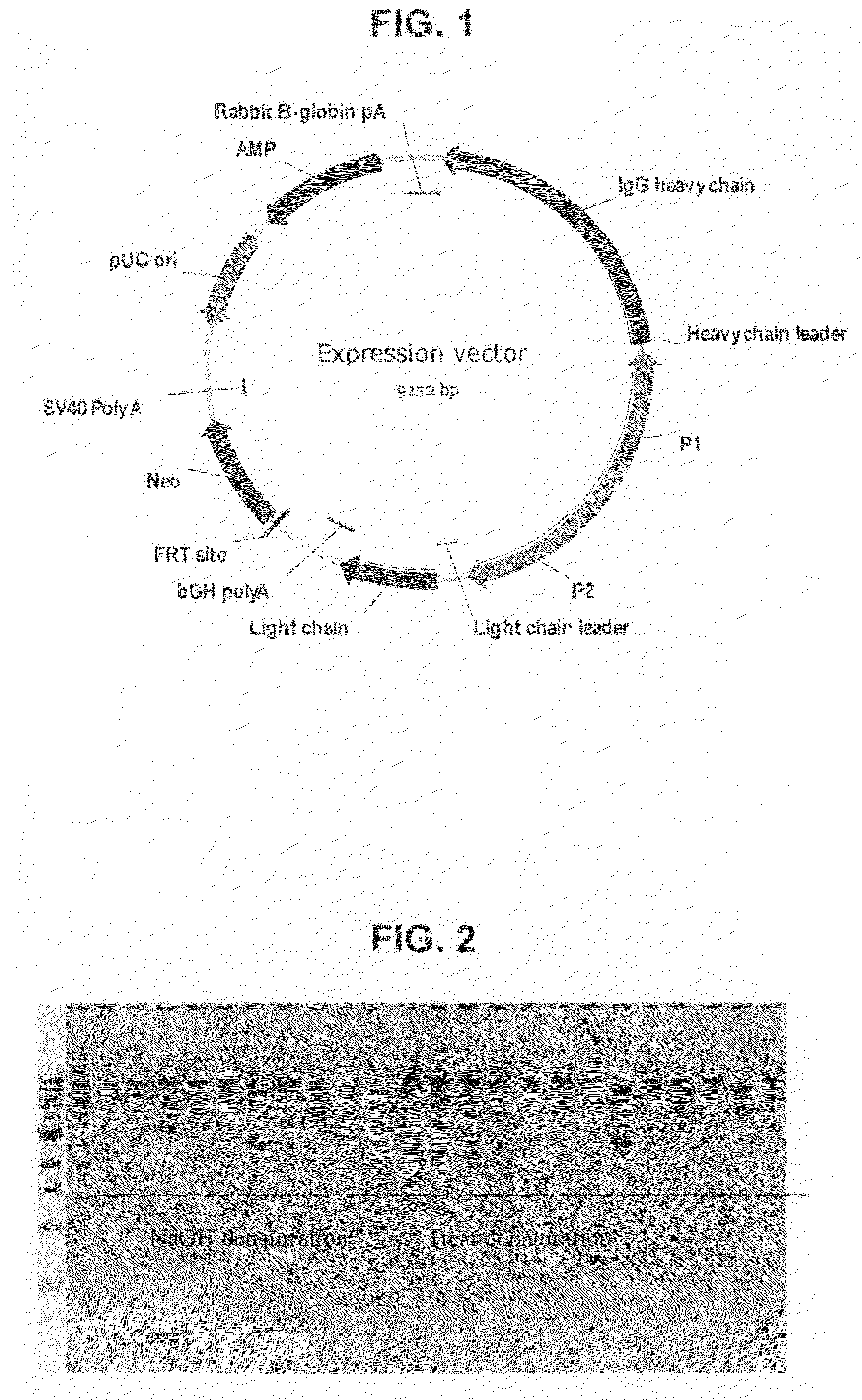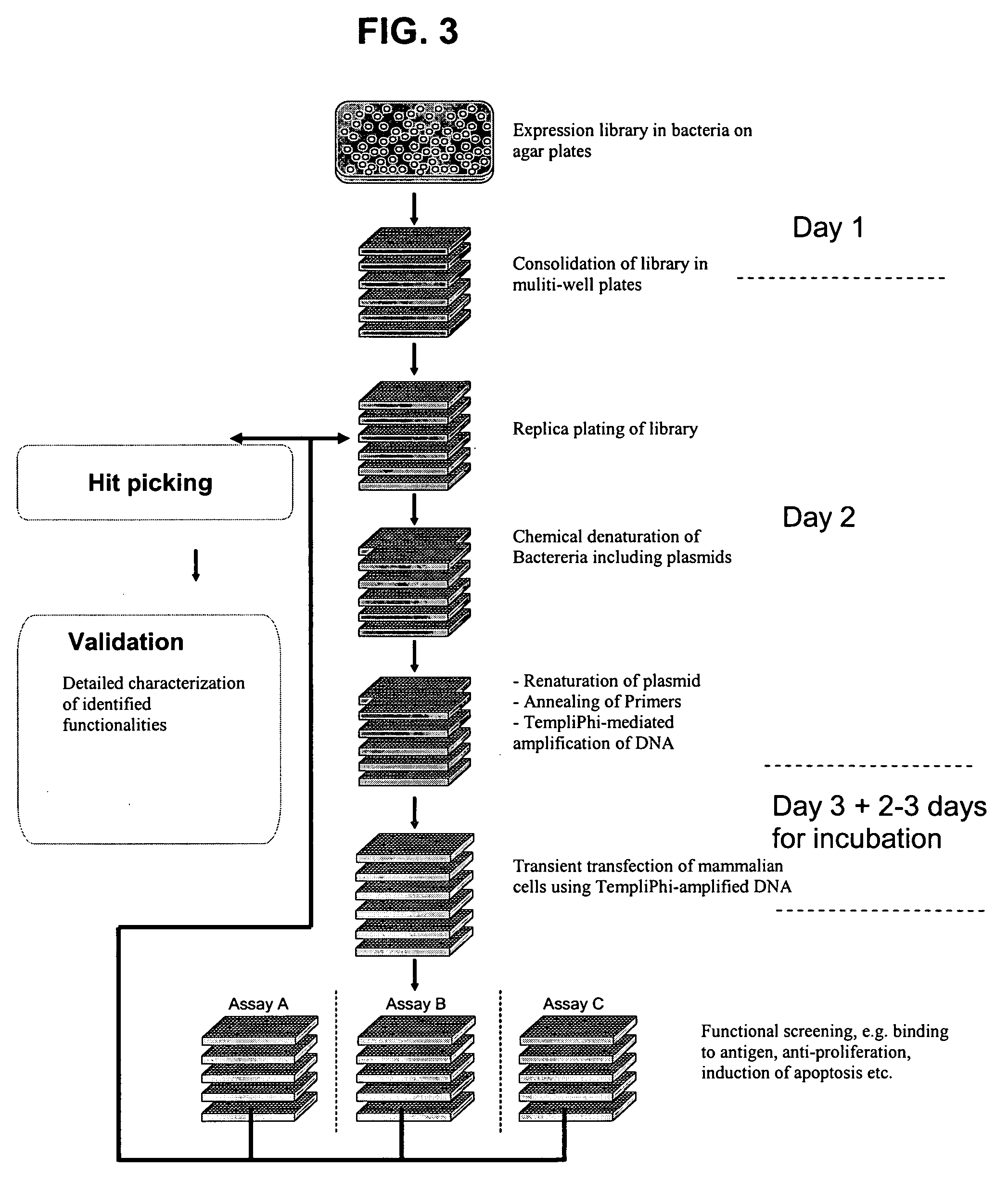Screening for expressible transfectants in a eukaryotic system
a technology of expressible transfectants and eukaryotic systems, applied in the field of molecular cloning, can solve the problems of significantly reducing the complexity and time consumption of high-throughput expression cloning of secreted proteins, and achieve the effect of significantly reducing the complexity and time consumption of high-throughput expression cloning
- Summary
- Abstract
- Description
- Claims
- Application Information
AI Technical Summary
Benefits of technology
Problems solved by technology
Method used
Image
Examples
example 1
TempliPhi® Reactions Using 2 Different DNA Denaturing Schemes
Preparation of TempliPhi DNA:
[0103]The 12 plasmids (FIG. 1) used in the following were derived from a project aiming at providing an anti-tetanus polyclonal antibody. One of these plasmids (no. 11, 2-B9) was without a promoter fragment and accordingly smaller in size.
[0104]The reactions were performed with the TempliPhi® amplification kit, Amersham Biosciences cat. no. 25-6400-10.
[0105]Bacterial colonies containing the 12 plasmids were picked into 384-well plates containing 150 μl 2×YT medium containing 100 μg / ml carbenicillin and shaken overnight at 37° C.
[0106]1 μl of bacterial culture was mixed with 25 μl of H2O and 0.5 μl of the resulting mixture was subsequently mixed with 5 μl of Sample Buffer (from the TempliPhi amplification kit). Denaturation of bacterial DNA including plasmid DNA was performed for 3 minutes at 95° C. 5 μl of reaction buffer (from the TempliPhi amplification kit) and 0.2 μl of Te...
example 2
[0110]TempliPhi DNA representing the 12 different plasmids (FIG. 1) was prepared as described in Example 1 using heat denaturation. After amplification the reaction mixtures were diluted with 4 volumes of H2O. CHO Flp-In cells (Invitrogen) were seeded into 384-well plates (Applied Biosystems, cat. no. 4307723) in a density of 2000 cells per well in 20 μl of Ham-F12 medium containing 10% fetal calf serum. A total of four transfections were performed in parallel with each TempliPhi preparation.
[0111]Transfection was performed the following day (the day after seeding). Transfection mixes were prepared as follows:[0112]1.5 μl FuGENE 6 (Roche) and 28.5 μl Dulbecco-modified Eagle's medium (DMEM) was incubated for 5 minutes at room temperature[0113]FuGENE-DMEM was mixed with 10 μl of TempliPhi amplified DNA and incubated at room temperature for 15 minutes (transfection mix)[0114]2 μl of each FuGENE-DMEM-DNA mix was added to each well in the 384-well plate containing cells and the cells wer...
example 3
[0123]Automated procedures for TempliPhi reaction set up, transfection and screening in 384-well format were developed using an Aquarius 96 (TECAN) liquid handler. E. coli harbouring a plasmid library of mammalian expression vectors encoding anti-tetanus specific antibodies (FIG. 1) with a frequency of specific anti-tetanus antibodies of approx. 10% was used as template.
Automated Preparation of TempliPhi DNA:
[0124]25 μl 0.1 M NaOH was dispensed in each well in a ScreenMate 384 deep well (Matrix). 0.5 ∥l overnight culture from random single E. coli colonies, derived from the anti-tetanus library, was dispensed and mixed by aspirating and dispensing 3 times in each well of the plate. The cultures were prepared as in Example 1 in a ScreenMate 384-well deep well plate, leaving row 1 empty. Thus, 368 colonies were inoculated in total. The mix of E. coli culture and 0.1 M NaOH was incubated for 15 minutes
[0125]10 μl TempliPhi reaction mix (5 μl Enzyme buffer+5 μl Denaturing buffer) of Tem...
PUM
| Property | Measurement | Unit |
|---|---|---|
| temperature | aaaaa | aaaaa |
| temperature | aaaaa | aaaaa |
| temperature | aaaaa | aaaaa |
Abstract
Description
Claims
Application Information
 Login to View More
Login to View More - R&D
- Intellectual Property
- Life Sciences
- Materials
- Tech Scout
- Unparalleled Data Quality
- Higher Quality Content
- 60% Fewer Hallucinations
Browse by: Latest US Patents, China's latest patents, Technical Efficacy Thesaurus, Application Domain, Technology Topic, Popular Technical Reports.
© 2025 PatSnap. All rights reserved.Legal|Privacy policy|Modern Slavery Act Transparency Statement|Sitemap|About US| Contact US: help@patsnap.com



